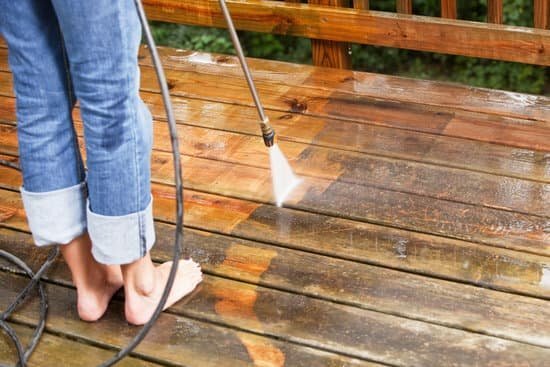UNDER PRESSURE: PUSHING TOO HARD WHEN WE COULD BE LETTING GO
My family recently and very reluctantly decided to take on a home maintenance project that we’d been putting off for years: the dreaded deck refinishing. Our big, beautiful deck had fallen into disarray, with paint shedding and boards rotting. The project would require hours spent stripping off moss and flaking paint, ripping up and replacing rotted boards, and painting on a new protective coating. The work hung heavily over my head and I approached it with a sense of dread.
Then we got a new pressure washer. Nothing like a new gadget to get things moving. Eyeing the new device that Saturday morning, I perked up to the idea. I decided to take the pressure washer out for a spin. I have a thing for power tools, especially one that can blast away the moss and grime I’ve been scowling at every time I sit down on my deck. I threw on my sunglasses, cranked up some 90’s house music and squeezed the trigger. I was delighted by the strong blast it responded with, cutting a clean line through the mossy boards and revealing the bare wood beneath. So satisfying. I got into a rhythm and dug in.
Hours later, my husband came looking for me. What was I still doing out here? Pausing, I peeled my hand off the trigger and staggered as I stretched after being bent over for so long. Ok, maybe that was a little too much pressure washing for one day. I came into the house and helped myself to some of my daughter’s snacks. Huh. These chips taste like dirt. Surveying myself in the hallway mirror, I found that the chips’ flavoring may have something to do with the grime plastered on my face, arms and legs. I was covered in deck filth and hadn’t really noticed, so intent on my goal.
The next day, recovered and ready to blast more of that deck, I went out to survey my handiwork. And realized that I had splintered just about every surface of wood I’d pressure washed. The parts of the deck I’d “fixed” looked almost hairy- furry strips of raised wood grain punctuated by deep fissures. I’d fallen into a classic trap: using too much pressure and damaging the very thing I was trying to fix. A quick perusal of YouTube confirmed that I wasn’t alone in this mistake. Damage caused by pressure washing is a pretty common thing. So why do we do it? Why do we work so hard to “improve” something when there’s such a high likelihood of spoiling it?
This question reminded me of the Taoist concept of the Uncarved Block, which I originally discovered in The Tao of Pooh. As Benjamin Hoff explains it, “the essence of the principle of the Uncarved Block is that things in their original simplicity contain their own natural power, power that is easily spoiled and lost when that simplicity is changed.” My takeaway: in so many instances in my life, my desire to control or shape something resulted in making it worse. Exerting control created a result I hadn’t intended. What would I gain if I just let some of these things go, and allowed them to naturally take their shape?
Surveying the deck damage, I was taken back to this idea of the Uncarved Block, and some of the many examples in my life where I had pushed too hard, tried to exert too much control, and ruined what I had been trying to shape. There were the small things, like the spray tan that was going to give me that perfect glow on my beach vacation, and ended up leaving me adorned in orange streaks. Guess I’ll be wearing the maxi dress to the beach. Or when I dragged the kids up the mountain on a day hike, rather than letting them stop every few minutes to look at the slugs and flowers. See kids, isn’t hiking fun?! And then there are the bigger things, like pushing one of my direct reports too hard to flawlessly execute a project, and making her cry. Great leadership, that’s exactly what she needs for motivation.
So how do we avoid pressure washing our lives? How do we know when to stop squeezing the trigger so hard, and just let it be? Although my splintered deck might present evidence otherwise, I’ve found some clues to answering this question. The first is recognizing when I’m gripping too hard. I can ask myself:
Have I checked back on this half a dozen times?
Do I continue to play different scenarios in my mind?
Am I looking at this as having only one acceptable outcome?
If so, this is usually a good sign that I’m pushing too hard. The next step is to reframe the way I’m looking at it:
What’s another way I could approach this?
What other outcomes, besides the one I’m pushing for, might be ok?
My favorite: What would happen if I just did nothing?
Getting myself to recognize when I’m pushing too hard and to consider the reframe makes a big difference. At the very least, it can help me proceed with more awareness. Sometimes, it even results in me letting go and letting things take their course. When I do this, I’m often pleasantly surprised at the natural, simple outcome that takes shape.
What aspects of your life are currently getting pressure washed? Where could you let go? What are the possible outcomes? A coach can be a great partner in helping uncover the areas that you may be gripping too tightly, and the places where you can find more ease in your life. Contact me to learn more about the power of coaching.

